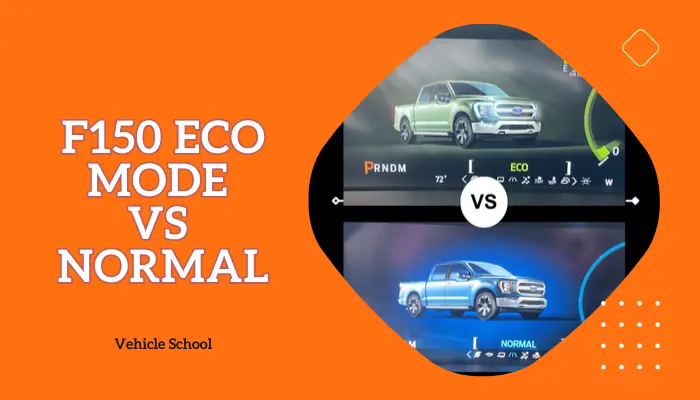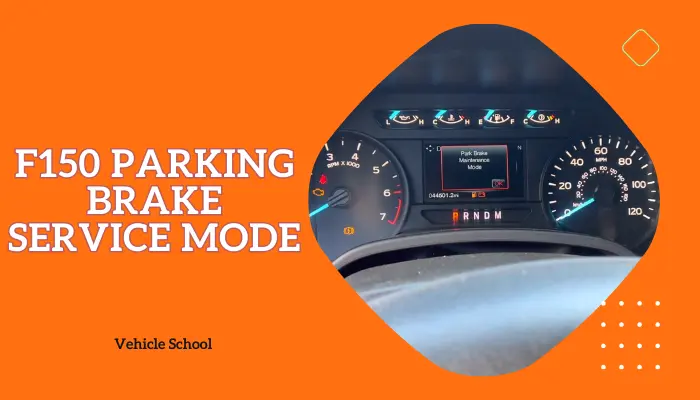Adaptive Cruise Control is your ticket to hassle-free driving. This intelligent cruise control system takes charge of your speed, maintaining a safe gap between you and the vehicle ahead.
For those who want to give it a go, I’ve provided a detailed, step-by-step walkthrough to add Adaptive Cruise Control to their F150 in this guide.
Can You Add Aftermarket Adaptive Cruise Control Be To Ford F-150?
Yes, aftermarket adaptive cruise control can be added to your F150 but it’s a bit complex. It involves installing sensors, a specialized bumper cover, and a processing module.
This process can be expensive, and there’s a risk related to your F150’s VIN when dealing with the dealership, potentially leading to unintended software changes. Due to these challenges, it’s not the most practical option.
Step-By-Step Process Of Adding Adaptive Cruise Control In F150
Now, let’s get right to the process of installing Adaptive Cruise Control (ACC) to your F150.
| Disclaimer: As I said earlier, this process can get long and complicated. You can retrofit Adaptive Cruise Control to your Ford truck safely if you know what you’re doing, but if you’re not careful, you might mess up your truck’s system. In that case, do this at your own risk or just call in a tech instead. |
These are the tools you’ll need:
- Ratchet Set
- e-Torque Socket Set
- Upholstery Tool Remover (Claw Type)
- Small Flat Screwdriver
- Combination Square
- Magnet Retrieval Tool (if necessary)
- Sharpie or Marking Pencil (for marking black steel)
- Small Torx Driver Set
- Ramps (optional for more clearance when working underneath)
- Torque Wrench
Step 1: Disconnect the Battery
As always, safety comes first. Disconnect your truck’s battery to ensure you’re working in a safe environment.
Step 2: Install The HUD Module
Using a small screwdriver or trim removal tool, gently pop out the blank plate where the HUD module will be installed. Attach the HUD module to the new trim plate and securely place it in the dashboard.
Step 3: Next Install The Wiring Harness
Locate the new harnesses responsible for powering the fog lights and the new CCM module.
Find the connectors for these harnesses near the passenger headlight assembly. You might need to run additional CAN and power wires if necessary.
Carefully remove the old harness and clip in the new ones at the same locations. Ensure the CCM pigtail is correctly connected.
Step 4: Install The CCM Module
While removing the grill is possible, it’s best to remove the bumper for easier installation. Utilize spring nuts and bolts to secure the CCM bracket. Ensure the bracket is properly fastened to the bumper.
Attach the sensor to the bracket using the provided studs and nuts. Adjust the sensor’s level with the top adjustment screw.
Be careful while doing so, misalignment or damage to the CCM module will trigger “adaptive cruise not available sensor blocked see manual” alert in your F150.
Step 5: Install Steering Wheel Controls
Carefully remove the airbag using two hex wrenches. Disconnect the wiring connectors behind the airbag.
Replace the cruise control switch on the steering wheel with the new ACC switch. Be cautious not to over-tighten the screws. Reconnect the wiring connectors and reinstall the airbag carefully.
Step 6: Replace The ABS Module
Install the necessary software and connect the VCX Nano device. Disconnect the connectors, remove the screws, and replace the old ABS module with the new one.
Use FJDS to initiate the PMI (Programming and Initialization) procedure. Follow the on-screen prompts to program the new module.
Step 7: Make These Forscan Modifications
- Make IPMA changes: 706-01-01 xxxx Axxx 6977.
- Modify IPC settings: 720-01-01 xFxx xxxx xxxx, 720-01-02 xxxx 9xxx xxxx, 720-04-01 Exxx x1xx xxxx, 720-09-01 xxxx xxxx 2xxx.
- Adjust SCCM settings: 724-03-01 19xx xxxx xx.
- Make necessary changes in BCM: 726-13-01 xx90 6xxx xxxx.
- Adjust CCM settings using the VIN: 764-01-01 05xx xxxx xx (First four characters of VIN in HEX), 764-01-02 xxxx xxxx xx (Next five characters of VIN), 764-01-03 xxxx xxxx xx (Next five characters of VIN), 764-01-04 xxxx xx00 001x (Last three characters of VIN in HEX), 764-01-05 0000 0071.
- Apply this change for ABS: 760-03-01 Fxxx xx (or D if you don’t have the Hill Descent Switch).
Step 8: Finally Calibrate and Test Everything
Run the CCM calibration using Forscan. Drive the vehicle until the calibration process is completed. Perform ABS PMI with FJDS and IVD calibration with Forscan or FJDS.
Apply this change for ABS: 760-03-01 Fxxx xx (or D if you don’t have the Hill Descent Switch). Use Forscan to clear all DTCs. Turn the ignition off and on to ensure no remaining DTCs.
In IPC, change Cruise Control mode from Normal to Adaptive. Start your vehicle and verify that ACC is working correctly.
How Much Will It Cost To Add Adaptive Cruise Control System in F-150?
It varies greatly. Getting Adaptive Cruise Control installed at a dealership could cost you roughly $3,000 to $3,500, covering parts and labor. Yet, DIY enthusiasts have managed to add it to their F-150s for under $1,200.
By purchasing new OEM parts and doing the installation personally, you can save a significant amount.
Advantages of Adaptive Cruise Control
Here are a couple of benefits you might get with ACC:
- Improved safety by maintaining a safe distance from the car in front.
- Reduced driver fatigue on long trips as ACC manages speed changes.
- Better fuel efficiency as it optimizes acceleration and deceleration.
- Easier navigation in heavy traffic, handling stop-and-go situations.
- A possible boost in your vehicle’s resale value with advanced features.
Drawbacks Of Adaptive Cruise Control
There are somewhat significant drawbacks, though. These include:
- Initial high costs for purchase and installation.
- Complex features that may take time to understand.
- Reliance on sensors, requiring maintenance or replacement.
- Less effective in bad weather like heavy rain or snow.
- Potential need for recalibration or software updates, involving extra time and costs.
FAQs
How To Tell If Your F150 Has Adaptive Cruise Control Or Not?
You can tell if your F150 has Adaptive Cruise Control or not by taking a look at the truck’s steering wheel – specifically at the control panel on its left. If you see arrow symbols on it, the truck has Adaptive Cruise Control. These are the distance settings for the cars in front of the truck, used to calibrate Adaptive Cruise Control. If you see only letters, then there’s no Adaptive Cruise Control.
Which F-150 has Adaptive Cruise Control?
Adaptive Cruise Control is included in the King Ranch, Raptor, and Limited editions of the F-150.
When was Adaptive Cruise Control added to the F-150?
Adaptive Cruise Control became available recently as part of Ford’s advanced safety features. The 2015 Ford F-150 is the first pickup truck from Ford to include ACC.
Does Ford Co-Pilot 360 Assist have Adaptive Cruise Control?
Yes, Ford Co-Pilot 360 Assist includes Adaptive Cruise Control in its suite of advanced driver-assist technologies.
Is Adaptive Cruise Control worth it?
It depends on your driving needs. It adds safety and convenience, making it great for long drives and heavy traffic.
Is Blue Cruise and Adaptive Cruise Control the same?
No, BlueCruise isn’t the same as adaptive cruise control (ACC). It’s a unique feature from Ford that combines adaptive cruise control with lane-centering assistance, but only on specific mapped roads. Unlike regular adaptive cruise control, BlueCruise lets you drive hands-free under certain conditions on approved highways. And if you’re wondering if can I add Blue Cruise to f150, you should check out my detailed guide on that.
Final Thoughts
There you go; you should have it all set up now.
Your F-150 is ready to roll with Adaptive Cruise Control, making your driving experience smoother and safer.
Take it for a spin and enjoy the convenience it brings to your daily commute.






